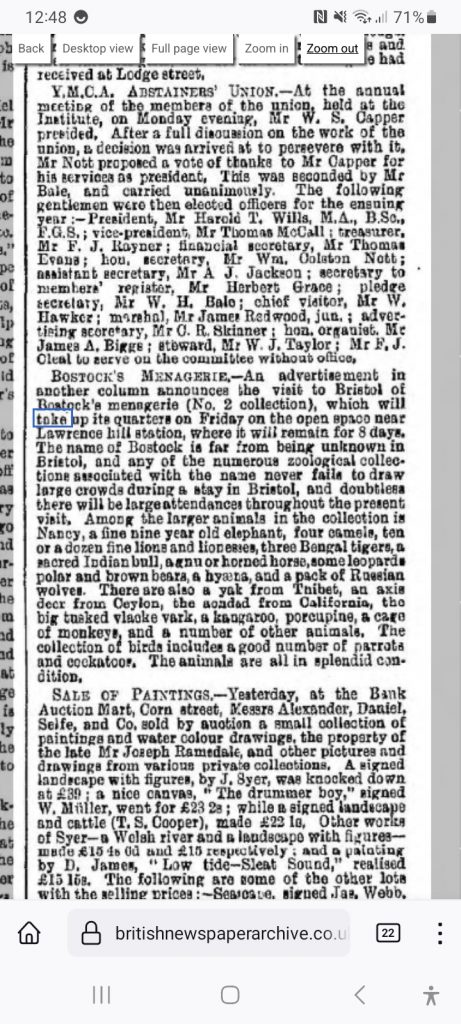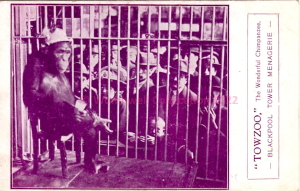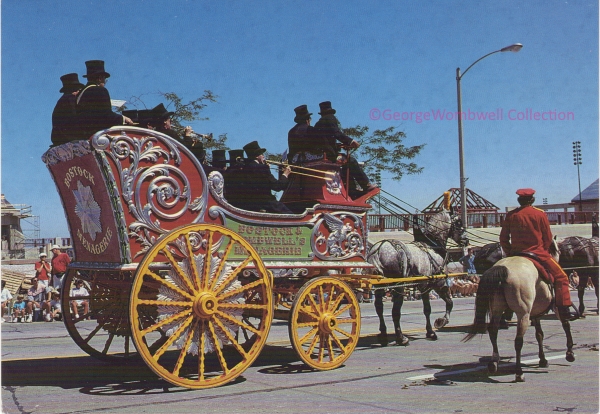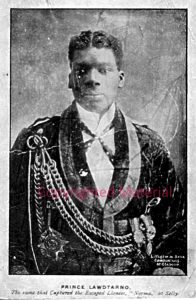Verso:
‘on Great North Road 1903’
‘McAlpine’
Pencil: ‘Noble Horse’


Verso:
‘on Great North Road 1903’
‘McAlpine’
Pencil: ‘Noble Horse’


Wessex Archaelogy are to look for a dead elephant near Kingswood, Bristol. Here’s The Observer link to the report.
I have doubts they will find much other than bones. Bones with lots of ‘hacks’ on them. At £400 a time the late Victorian menagerist, EH Bostock (or in this case his brother in law Frank Bostock (Little Frank*)), would have extracted as much of the meat from the bones to feed to the other beasts in the menagerie.
However, if they do find anything of the elephant, then the forensics would be interesting. The pit would, of course be large and easy to spot methinks!
Psst! There’s an elephant buried on the banks of The Clyde River. Don’t tell anyone.
There’s one buried at Smithfields market too!
*Not to be confused with E H’s brother Frank (Big Frank)
hattip to Heather for these reliable facts.

Image copyright GeorgeWombwell.com 2023, All rights reserved.
There is an emergence of interest in the burial sites of large beasts that died across the country. Most are reported in local newspapers of the time and invariably the beasts passed away as part of a travelling menagerie. Recently, one such animal, an elephant, was reported to have deceased and been buried in a local graveyard in Kingswood, Bristol (1891).
There may be various reasons for burying elephants where they die, but one reason may have its roots in Indian tradition.
The practice of burying an elephant where it dies is rooted in the cultural and religious traditions of India. Elephants hold a special place in Indian culture, where they are revered as sacred and often associated with various Hindu deities such as Ganesha, the elephant-headed god of wisdom and prosperity.
When an elephant dies, especially in regions where they are considered significant, there is a belief that it should be accorded a respectful farewell and burial. The burial rituals vary depending on the local customs and traditions, but the underlying sentiment remains the same—to honor the majestic creature and ensure its passage to the afterlife.
In some instances, the burial of an elephant may involve a communal effort, with local communities and authorities coming together to perform the rituals. The burial site is often chosen carefully, taking into consideration factors such as proximity to water sources and the elephant’s natural habitat. The process typically involves digging a large pit or trench, deep enough to accommodate the massive body of the elephant.
The burial itself can be a complex and time-consuming process, given the size and weight of an elephant. The local community may use ropes, pulleys, and machinery to carefully lower the elephant’s body into the burial pit. The grave is then covered with soil, forming a mound or raised platform to mark the resting place of the elephant.
The practice of burying elephants holds significance beyond the physical act of burial. It is believed to demonstrate reverence for the animal and symbolize a respectful farewell, ensuring that the elephant’s spirit finds peace in the afterlife. Additionally, burying the elephant near its natural habitat is seen as a way to maintain the ecological balance and pay homage to the creature’s role in the ecosystem.
It is worth noting that the burial of elephants is not a widespread practice throughout India. It is more commonly observed in regions with a long-standing history of human-elephant coexistence, where elephants are revered and considered an integral part of the local culture and mythology.
While burying an elephant is a culturally significant practice, it is also important to consider the environmental impact and practical considerations associated with such burials. Authorities and local communities need to strike a balance between preserving cultural traditions and adhering to environmental regulations to ensure the conservation of the ecosystem.
In recent years, there has been an increased emphasis on wildlife conservation and the implementation of more sustainable practices. As a result, alternative methods such as natural decomposition or cremation may be considered as viable options to address the ecological concerns associated with large-scale burials.
Overall, the practice of burying elephants where they die reflects the deep cultural and spiritual connection between the Indian people and these majestic creatures. It serves as a testament to the rich tapestry of traditions and beliefs that shape India’s diverse cultural landscape.
An rare monochrome photograph and a monochrome postcard have been added to the archive.

Date unknown, but the menagerie is utilising electric lights. Verso states the menageire was sold at Newcastle.

The photographic angle of the second image is interesting: Who’s looking at who!

A Grand Bostock and Wombwell bandwagon in USA parade at Circus World Museum, Wisconsin where many Victorian Menagerie items are on display/stored. Any B&W items were probably from Frank Bostock’s collection.
Colour printed postcard, verso: This elegant vehicle dates back to 1882 England. A remarkable feature of this wagon are the six-foot diameter rear wheels. The Wombwell name dates back to 1805 when it was used on a travelling menageire. Photo:Jim Morrill

E H Bostock probably with Dixie the elephant around 1932

Prince LawdTanno (Spell) known to have been travelling with a menagerie and circus around 1905. Probably a lion tamer modelled on Montarno the African Lion King. Known to have travelled with Chipperfield’s French Menagerie during the early twentieth century.

Waggon containig two lions and possibly a seated trainer or keeper, also at Selby circa 1930. Not a typical B&W waggon, so it is also probably a Sanger outfit.
The following photographs have been sent to us for dating and for any other information. I have added my comments underneath each photograph, but would welcome further information via the comments section at the bottom of the post or via email: shaun.everett1@gmail.com
Thank you for your interest in this project about the local history of Selby in Yorkshire. My thanks to Mr Chilvers for providing the original photographs.

Rare view of B&W booth at Selby during 1931. This must have been one of the last times it visited the town or anywhere else, given it disbanded the following year. Shows the poor condition of the booth front.

At Selby, showing a group of Dancing Bears on the left of the picture performing for the local population. Unknown group and date. Information would be welcome.